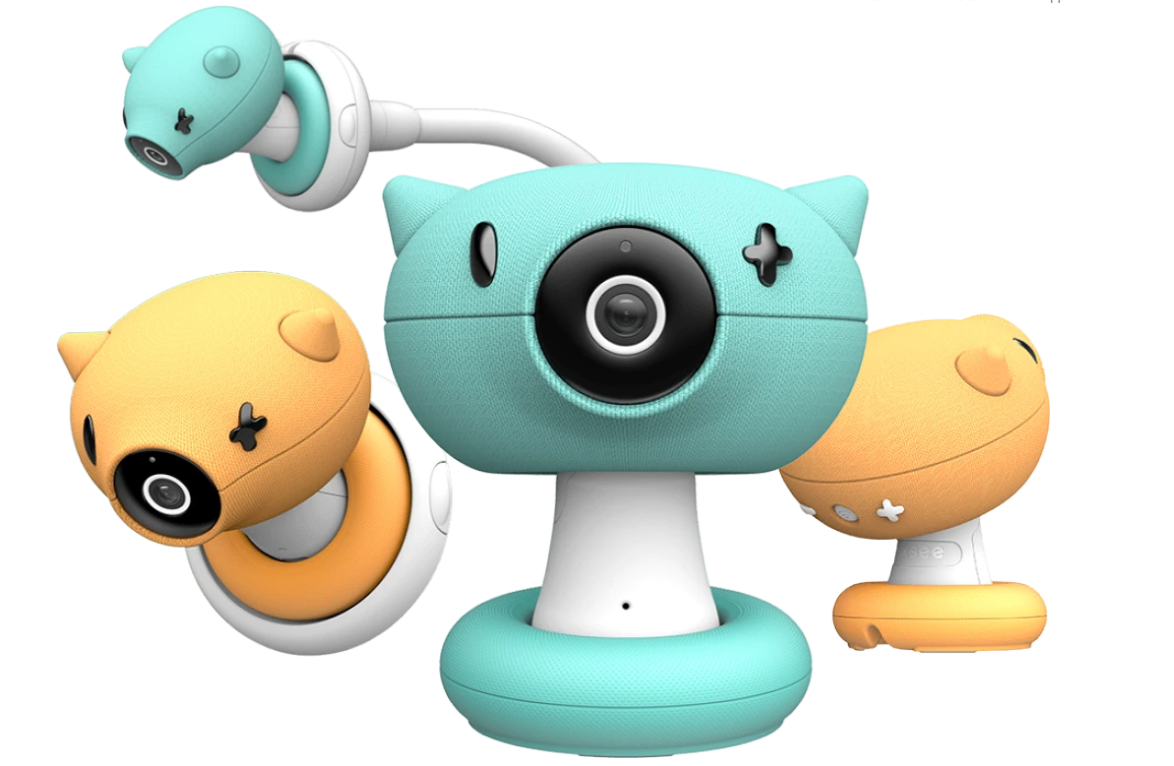One day you will find yourself holding up your newborn's impossibly tiny clothing, agonizing over whether to keep it, donate it, or toss it away. It's surprising how sentimental you can get over an itty bitty sock or a doll-sized onesie. All the routines tied to your baby's earliest days are hard to break because they serve as an acknowledgment that your sweet infant is growing up.
You might even get teary-eyed over retiring your beloved, hard-working baby monitor! The best baby monitor can be a parenting companion that helps provide peace of mind by watching over your sweet baby. You might wonder when to stop using your baby monitor (or whether you need to stop at all).
We've gathered six factors to consider when you're contemplating the right time to stop using a baby monitor. We'll discuss the pros and cons of baby monitors at different ages and stages to help you make the best choice about when to pass yours on.
Read on to learn the answer to the question, "should I stop using a baby monitor?"
Factor 1: Self-Soothing Is a Skill
All types of baby monitors allow parents to peek in on their little ones once they transition from the bedside bassinet to the nursery. It's comforting for new parents to be able to respond to their baby and soothe them immediately.
Naturally, infants get used to immediate comfort. They will come to expect an instant response from their reactive caregivers.
Responding to your baby isn't a problem until a lack of sleep begins to impact your quality of life. Your baby can't learn to self-soothe until you allow them to manage their emotions without your intervention.
The average baby is ready to practice self-soothing at about six months, but you know your little one best. Even if you phase out the monitor at night, you might find it helpful during naps, playtime, or when you're away from home.
Factor 2: Toddlers Are Daredevils
It happens to everyone—one day, you will wake up, walk into your toddler's room, and discover they've escaped their crib on their own. While this is an exciting milestone for a little one, it's less exciting for a parent concerned about their child getting hurt.
Using a monitor during this transition can help parents grant toddlers independence. They can continue keeping an eye on them as they explore the boundaries of their world.
Some monitors, such as Pixsee, include area detection features to alert parents when their little one has wandered beyond a designated area. This feature offers a good compromise for parents who want to balance freedom and surveillance.
Factor 3: Not All Homes Are Alike
Parenting in a tiny New York City apartment will always be different than parenting in a sprawling, multi-level house in the countryside. If your child's nursery or bedroom is far away from where you live or sleep, there's no harm in using it until your child is as old as four or even more.
Likewise, if you can hear your little one from anywhere in your small living quarters, you can safely put the baby monitor away. Consider taking it out for trips or travel.
Baby monitors like Pixsee offer crystal-clear two-way talk, allowing you to use it as an intercom system. If your little one is talking, it's a helpful tool for communicating across long distances. Many parents change how they use their monitors as their children grow rather than getting rid of them.
Factor 4: Understand Your Anxiety Level
A baby monitor can easily become a crutch for an anxious parent. You might find yourself policing developmentally appropriate behaviors, such as babbling in the crib before bedtime. If you become too attached to your baby monitor, your behavior can devolve into helicopter parenting.
Ask yourself if your baby monitor is causing you to lose sleep or obsess over what your baby is doing in the other room. If the answer is yes, you may want to retire monitor use during the nighttime.
Factor 5: Children Deserve Privacy
Children are independent individuals, and learning to become complete human beings separate from their parents is a key part of their developmental process. Children can become self-conscious about their privacy needs as early as two and a half years old. Surveillance can cause older children to change their behavior because they're aware you're watching.
Some parents might stop using the baby monitor when their child becomes aware of it. Other parents include their children in decisions regarding when to use it. It is healthy to inform your child about when you'll be supervising from a distance so they won't develop anxiety about their behavior.
Factor 6: You Know Your Child
You are the expert on your child and their needs. Children with medical concerns or other special needs might benefit from extended use of your baby monitor. Likewise, children who experience nightmares might sleep better knowing someone can come to their aid if they are in need.
Use your judgment, and always consult with your pediatrician if you have specific concerns.
When to Stop Using a Baby Monitor
Ultimately, there is no cut-and-dry time to stop using a baby monitor. In fact, a great video baby monitor can grow along with your little one. Instead of putting your monitor away, consider adapting and changing how you use it.
The Pixsee smart baby monitor has features that come in handy long after you've kissed those late-night feedings goodbye. It's a quality, FHD video camera that can help you capture, caption, and share gorgeous photos and videos with your loved ones.
Visit our Pixsee Shop or Amazon online store to learn about the industry-leading features that make Pixsee another part of the family.







